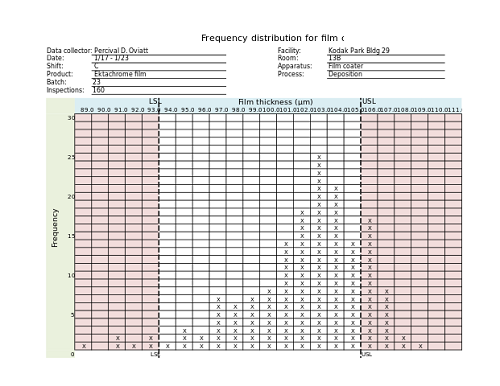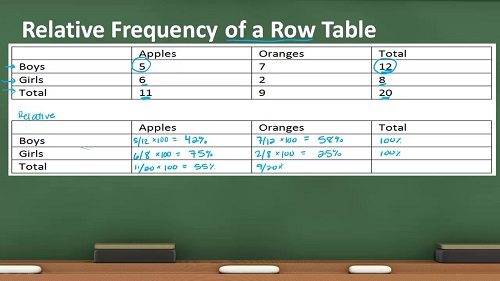Difference Between Frequency and Relative Frequency

Frequency vs. Relative Frequency
The terms “frequency” and “relative frequency” usually turn up when we talk about probability in statistics or math. Probability expresses a belief that a certain result will occur in an experiment, test, or research; it is used to determine the chances of a specific event happening. The probability of an event can be determined by conducting a little experiment and doing some minor calculations. Most people use probability in statistics; some use it in other areas of study as well, including mathematics, science, finance, or even gambling.
In statistics, frequency is the total number of times a given result came up in an experiment or study; the total number of times an event occurs. It can be said that frequency simply means the rate of occurrence. For instance, you are going to execute a test to determine the probability of getting a six when throwing a dice. You throw the dice ten times, and the side of the dice with six dots on it shows up three times. The result “three times” is your frequency. Drawing a card from a deck of cards is another way to test probability and to get the frequency at which a heart will be drawn. Pick five cards and see how many you get that have the heart symbol on them. Let’s say you got three heart cards – that is your frequency. You can obtain the frequency immediately after you carry out your experiment without having the need to calculate.

On the other hand, “relative frequency” is a term used for the fraction of how many times a result occurs over the total number of tries. Unlike frequency, which you can come up with by simply conducting the experiment, relative frequency involves some simple calculations. Let us assume you are conducting a random experiment by tossing a coin, drawing a card, throwing a die, or picking marbles out of a bag, and then repeating this action it “N” times. Afterwards, you take note of the absolute frequency of times a certain outcome occurred. The formula used to obtain the relative frequency is very simple; relative frequency is equal to the number of times the result occurred over the total number of times the experiment was repeated.
For instance, you are conducting a random experiment by drawing colored balls from a bag. You take ten balls out of the bag, and you observe that the red balls came up five times. In this case, the relative frequency is 5/10 or ½ – 0.5 in decimals. Another good example is to take samples from a production of computer monitors to see whether they are working properly. We take 50 random samples of the computer monitors to test and determine the relative frequency of defective ones. While conducting the experiment, we learn that ten of the said computer monitors are defective. Again we get the relative frequency by dividing the defective computer monitors over the number of samples we tested; 10 defective computer monitors divided by 50 computer monitors tested. We get 10/50, or 1/5, which is 0.2.
Summary:
1.Frequency is the number of times a result occurs, while “relative frequency” is the number of times the result occurs divided by the number of times the experiment is repeated.
2.Frequency can easily be determined by conducting a simple experiment and noting how many times the event in question occurs; no calculations are needed. On the other hand, relative frequency is determined by using simple division.
- Differences Between Fraternity And Sorority - January 8, 2014
- Differences Between Lucite and Plastic - January 7, 2014
- Differences Between Oil and Butter - January 6, 2014
Search DifferenceBetween.net :
Leave a Response
References :
[0]https://commons.wikimedia.org/wiki/File:Frequency_distribution_for_film_coater.svg
[1]https://vimeo.com/103382213
